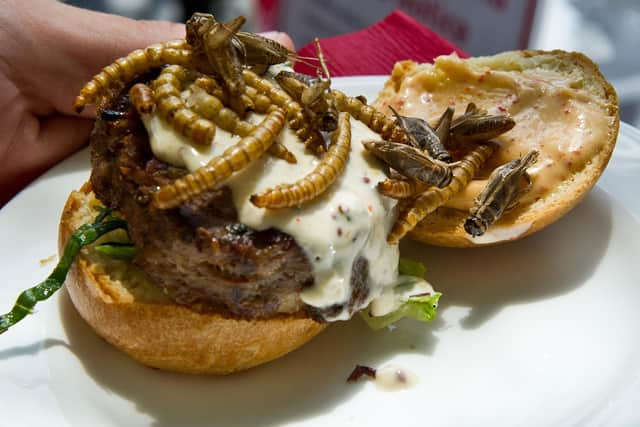Why eating insects won't save the planet – Philip Lymbery
Of all the Royal spectacles I’ve seen, this was my least expected: King Willem-Alexander of the Netherlands with his hands plunged into a mass of maggots. It was June 2019, and the King was opening one of the biggest farms of its kind. Paparazzi bulbs popped as he peered at the twitching antennae of black soldier flies. It was all part of unveiling what some see as the food of the future: insects.
Now, one thing that’s certain is the way we produce food needs a shake-up. Animal agriculture is responsible for more greenhouse gas emissions than all the world’s planes, trains, and cars combined. The question is, are insects the answer?
Advertisement
Hide AdAdvertisement
Hide AdInsect farming involves rearing them under controlled conditions before killing by freezing or shredding. They are then freeze-dried, packed or pulverised, before being added to burgers or snack bars, or eaten as they are. As the bug business hots up, it’s claimed eating insects can save the planet.


Feed the world
But scratch beneath the surface and the facts become less convincing. Mass farming of insects is far from a ‘free lunch’. It often involves feeding the critters cereals and soya, food that could be feeding people directly. Experts talk about ‘feed-conversion ratios’, by which they mean the amount of crops needed to raise the creatures compared with the amount of protein then provided.
Insects, as with other intensively raised animals, waste more than they produce. They are less wasteful than grain-fed cows, pigs or chickens but wasteful nevertheless.
The truth is globally we already produce enough food to feed twice the current human population. Yet still people talk about there being not enough to feed the world.
The main reason for this ‘not enough’ illusion is that so much is wasted by feeding vast quantities cereals and soya to pigs, chickens, cows and now crickets. Worldwide, in this way, we squander enough food to feed four billion people – half of humanity alive today. To feed the world, the best way would be to use croplands to feed people directly and use pasture for the animals.
Insect species going extinct
The other factor to consider is the ‘spray-away’ syndrome involved in having great crop prairies for animal feed. Industrial animal rearing, whether insects, pigs or chickens, relies on intensive cereal production with much spraying of the countryside with insecticides.
So, to produce one set of insects by farming, we effectively wipe out another. This further impoverishes our environment, leaving insect-eating songbirds and other wildlife to go hungry. An international team of scientists reported that up to half a million insect species have become extinct in recent times largely due to insecticide use in farming and loss of habitat.
Without insects, the world would be a very different place. They are essential to the food web and vital for successful cultivation of many crops. Without pollinating bees for example, there would be no tomatoes, chilli peppers, courgettes, blueberries, raspberries, runner beans or cucumbers – the list is endless. Making peace with insects is vital for well-stocked supermarket shelves in the future.
Advertisement
Hide AdAdvertisement
Hide AdPhilip Lymbery is chief executive of Compassion in World Farming and a former UN Food Systems Champion. His latest book is Sixty Harvests Left: How to Reach a Nature-Friendly Future. Philip is on Twitter @philip_ciwf
Comments
Want to join the conversation? Please or to comment on this article.
